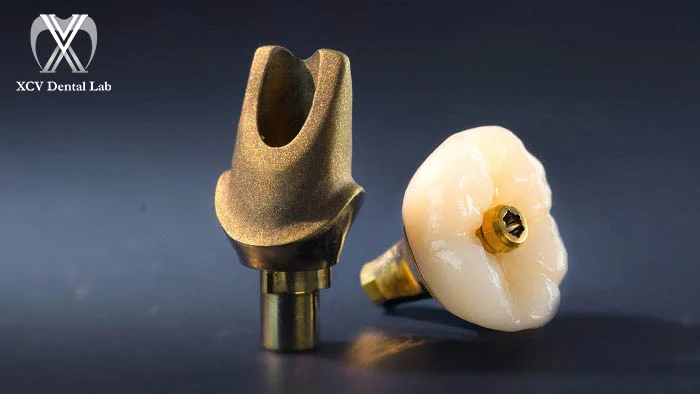
All-on-4 dental implants involve placing four implants in strategic positions within the jawbone, allowing for a fixed full-arch restoration without the need for bone grafting in most cases. With significant advantages in clinical efficiency, treatment time, and cost, All-on-4 has become an increasingly popular option, especially for clinics looking to expand their implant services and offer a more modern, streamlined experience to their patients.
In this article, we’ll explore how the All-on-4 works, its indications and contraindications, the clinical benefits it offers, and the essential role of the dental lab in ensuring long-term treatment success.
All on 4 dental implants are a full-arch tooth replacement solution that involves placing four titanium implants into the upper or lower jawbone to support a complete set of prosthetic teeth. These replacement teeth are securely attached to the implants, allowing for even distribution of bite force across the jawbone. This helps restore proper chewing function and eliminates the discomfort often associated with traditional removable dentures.
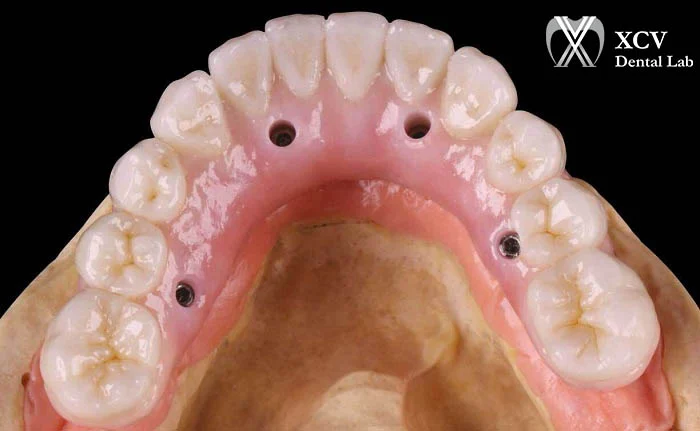
In this approach, two implants are placed vertically in the anterior region of the jaw, where bone density is typically the highest, even in cases of bone loss. These straight implants provide foundational support at the front of the arch. The remaining two implants are placed at a posterior angle (typically up to 45 degrees). This tilted placement allows the implants to engage more bone surface, bypass critical anatomical structures such as the maxillary sinus (in the upper jaw) or the inferior alveolar nerve (in the lower jaw).
By angling the posterior implants, clinicians can use longer implants, which enhances primary stability and reduces cantilever length in the prosthesis. This biomechanical advantage contributes to long-term success and improved function, especially in patients with limited bone availability.
One of the most significant advantages of all on 4 dental implants is that bone grafting is often unnecessary. By placing the implants in the anterior region of the jaw and tilting the posterior implants, clinicians can avoid areas with insufficient bone volume. This allows treatment to proceed without additional surgical interventions, reducing cost, complexity, and healing time.
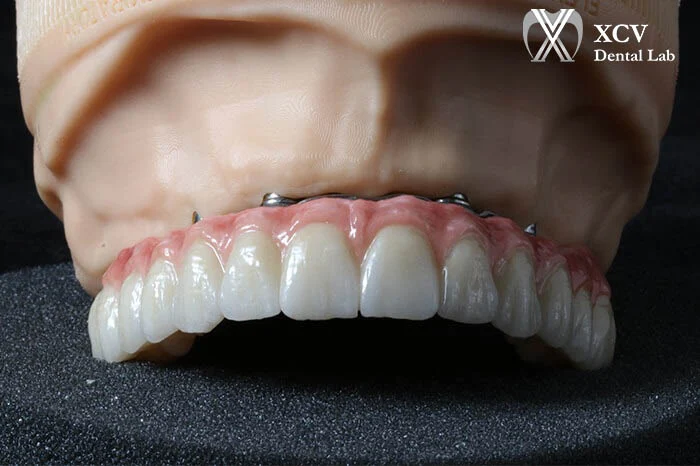
Another key benefit is the possibility of immediate loading. In many cases, patients can receive a temporary fixed prosthesis on the same day as implant placement. This eliminates the edentulous phase and allows patients to leave the clinic with a full set of functional teeth, dramatically improving confidence, speech, and quality of life from day one.
From a clinical perspective, the biomechanical distribution of force is optimised with All-on-4. The angulation of the posterior implants increases the anteroposterior spread, enhancing prosthetic support and minimizing cantilever forces. This contributes to greater long-term stability and lower risk of implant failure or prosthetic complications.
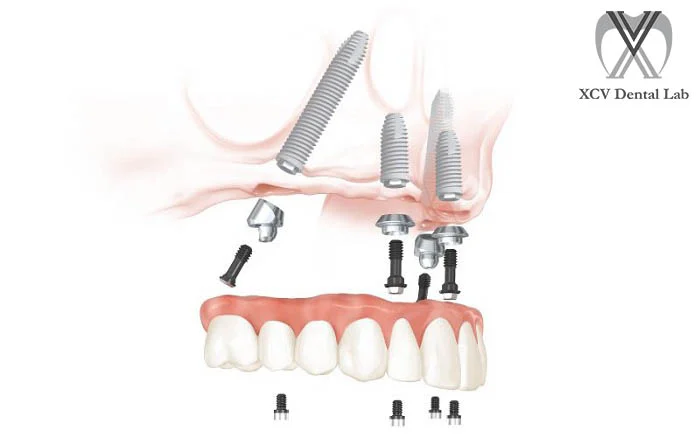
In addition, the All-on-4 dental implants approach simplifies the surgical and prosthetic workflow. With fewer implants and reduced need for bone augmentation, the overall treatment is more predictable and efficient. This translates to shorter chair time, fewer appointments, and faster turnaround, which is beneficial for both clinicians and patients.
The All-on-4 dental implants are designed to provide a reliable, graftless solution for full-arch rehabilitation. While it is a versatile treatment concept, appropriate patient selection remains critical to achieving long-term success. Understanding the indications and contraindications helps ensure predictable outcomes.
All-on-4 is ideally suited for patients who:
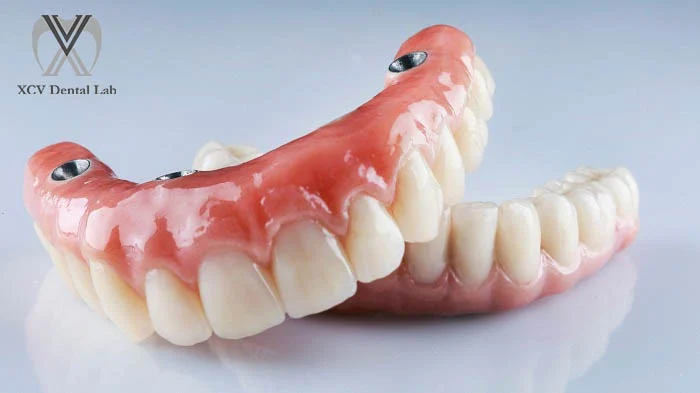
Despite its advantages, All-on-4 is not suitable for every patient. Absolute and relative contraindications include:
Additionally, patients with extremely thin anterior bone or severely resorbed jaws may still require pre-implant augmentation, or they may be better suited for a custom zygomatic or pterygoid implant approach.
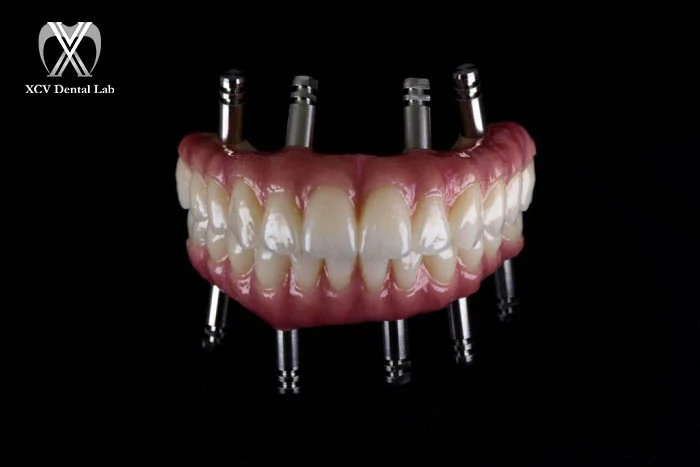
Achieving long-term success with All-on-4 full-arch restorations requires more than just surgical expertise; it demands a reliable partnership with a dental laboratory that understands the precision, speed, and prosthetic demands of the All-on-X. That’s where XCV Dental Lab becomes an invaluable extension of your clinical team.
As a full-service digital dental laboratory, XCV Dental Lab is equipped with advanced CAD/CAM systems, a streamlined digital workflow, and a team of technicians trained specifically in implant-supported prosthetics, including All-on-4, All-on-6, and other full-arch solutions. We work hand-in-hand with dental clinics across Australia to deliver fast, accurate, and aesthetic prostheses for even the most complex full-arch cases.
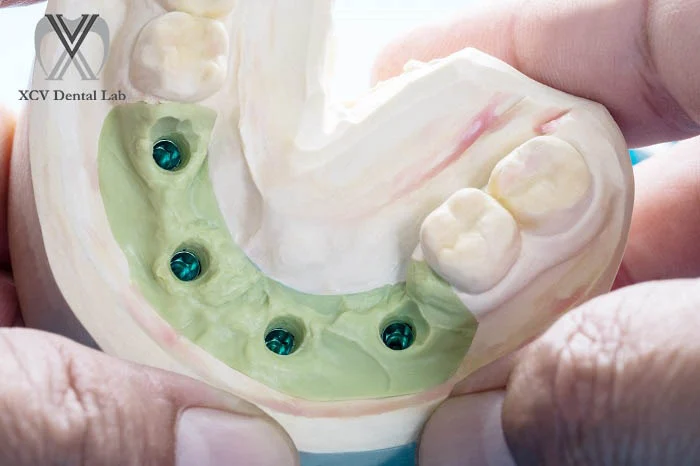
Why partner with XCV Dental Lab?
Expertise in All-on-X workflows
Our technicians are highly experienced in handling full-arch restorations and understand the clinical nuances of tilted implants, multi-unit abutments, immediate loading, and occlusal design for long-term stability.
Precision fit and passive seating
Using digital impressions and advanced design protocols, we ensure precise fitting frameworks, reducing chair time, remakes, and post-op adjustments.
Collaborative case planning
From diagnostic wax-ups and digital smile design to surgical guide coordination, we provide full support in planning and executing your All-on-4 cases. Your success is our shared goal.
Ongoing support & lab communication
Clear, consistent communication is a top priority. Our lab team is available to discuss individual cases, troubleshoot in real time, and provide personalised recommendations based on your preferences and patient needs.
Partnering with XCV Dental Lab means gaining a trusted digital ally in delivering functional, beautiful, and lasting All-on-4 restorations. Whether you’re transitioning from analog workflows or scaling your full-arch services, XCV is ready to support your growth with unmatched precision and service.